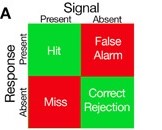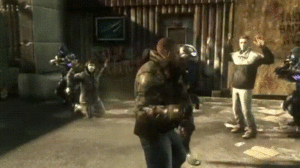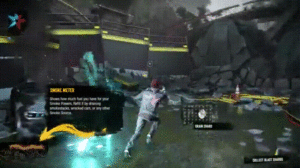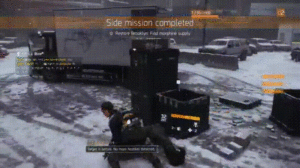Motivation is one of the main pillars of video game user experience. Competence, autonomy, and relatedness are the three basic psychological needs that people aim to satisfy according to the self-determination theory (SDT). When playing games, players need to feel adept (competence), have meaningful choices when deciding how to play (autonomy), and feel a sense of connection (relatedness).
SDT is one of the most well-known and widely-used psychological theories in games user experience research, primarily because of its influence on building the framework for player motivation. Free-to-play monetization models are a modern norm in the gaming industry and designers are always seeking ways to keep players motivated and coming back to their games for more. This post will discuss SDT through a series of popular mobile free-to-play hero-collecting games.
Star Wars: Galaxy of Heroes
Star Wars: Galaxy of Heroes focuses on collecting the many characters in the Star Wars universe and is a great demonstration of the competence motivator of SDT. For this motivator to have the desired effect, players need to feel like they are progressing and getting better at the game. Early on, Star Wars: GOH offers positive feedback on progress the player has achieved. Building this competence from the start and letting players know they are succeeding can help motivate them to continue.

The main progression is focused on players leveling up their character collection, which makes them more powerful and able to unlock new and upgraded skills in order to tackle increasingly-difficult content. Feedback is also presented during defeat, which reminds the player of items in his/her inventory to make characters more powerful in order to help overcome any current obstacles (see screenshot below). Even in defeat, player competence can be strengthened.

Additionally, the player has a level, which increases the energy used to play different modes and unlocks different game modes as well. Star Wars: GOH makes this information very clear to the player and notifies them of their progress with each level, presenting them with yet another goal to work towards. This feedback enables players to monitor their advancement and effort regulation towards a distant goal. Having an achievable distant goal also allows players to decide their playing pace/strategy and enhances autonomy.

Fire Emblem: Heroes
An important factor when playing a game is that the player has meaningful choices when deciding how to play (autonomy). In mobile games and, more specifically, RPG mobile games such as hero-collectors, choosing which quests to pursue or how to pursue them is a choice players have to make. For example, in Fire Emblem: Heroes, players can choose from story missions, training missions, special (limited-time) missions, and arena duels (PvP). To give more meaning to player choice, Fire Emblem: Heroes includes secondary check-list-type objectives that include things such as clearing specific missions, completing a certain number of specific mission types, and in-mission objectives, such as beating certain types of enemies.

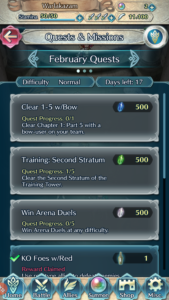
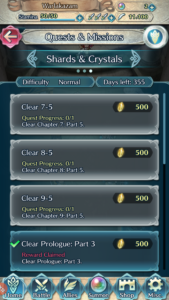
Quest/objective lists are common in many games for a reason. At our most basic level, humans do not like it when they begin something and do not finish; such conditions create an internal tension and preoccupation with the incomplete task (Madigan, 2017). This basic desire is a major underlying reason for daily quests and similar types of limited-time events/missions; players feel the need to log in daily to games that offer such quests in order to simply “check things off their list.” Not only does such action typically provide players with a reward, but completing a task also provides closure. Additionally, although these types of quests are entirely optional, humans also hate losing options once having them; a sense of loss, or losing out on an opportunity, can overcome players if they decide to (or inadvertently) skip limited-time quests.
Furthermore, players can utilize different combinations of any four heroes to strategically tackle whichever quest they choose. In Fire Emblem: Heroes, players can level up their heroes with XP gained by defeating enemies in combat or spending in-game gold to level them up. Defeating enemies and leveling heroes also results in Skill Points (SP), which allows players to customize their heroes by unlocking different skills and subsequently leveling those skills. This further enhances the meaning of player choice, especially if players are attempting to combine certain hero synergies and tactics.



Together, the examples discussed here for competence and autonomy (i.e., feedback in Star Wars: GOH and quest lists in Fire Emblem: Heroes, respectively) can invoke the endowed-progress effect. When players are given the feeling of advancement toward a distant goal, they’re more likely to try harder and longer to reach that goal, even relative to players who have an equally easy goal but received no sense of momentum right from the start. For example, in Star Wars: GOH, players begin receiving shards to unlock Darth Vader within the first few quests they complete, not only making them aware of this distant goal, but also providing them with a sense of advancement toward unlocking this character. It takes 80 shards in total to unlock Darth Vader and players are continuously unlocking nominal amounts of shards through daily quests, etc. The game reminds the player of his/her progress with each shard obtained in a check-list format (e.g., 48/80 shards) via pop ups and UI panes, which provides recognition to players and their progress toward this goal.
Walking Dead: Road to Survival
It is important for games to convey a sense of relatedness, or a sense of connection to others. These connections can be with other real players through social aspects of the game or through in-game characters. Walking Dead: RTS allows players to build both types of connections. Connections are made with other players through Factions and events such as All-Out-War, where players and their faction members take on other factions in asynchronous PvP. These Faction events give players team-oriented goals, tournaments (and placement-specific rewards when they’re over), leaderboards, and emphasis on achievements attainable only through team play, such as leveling up characters with certain traits within a specific time frame. Since players are working toward a team goal, they feel important to others and know that their play/participation affects not only themselves, but other players as well.



Players can also build a connection with in-game characters through the main story mode and various limited-time events. Walking Dead: RTS is based on the comics, not the TV show, and anyone who has read and enjoyed the comics will likely feel a sense of camaraderie with some of the fictional characters and stories. Players go through a lot of effort to feel these connections and progress-related missions help with that.

Summary
Self-determination theory and its three underlying motivators (competence, autonomy, and relatedness) are, in some form, present in most games. They are especially prevalent in mobile games and games seeking to keep a high level of player motivation and retention. This will lead to higher retention rates and likely more money spent in free-to-play games. SDT and its motivators have developed a framework for designers to achieve this, not only in free-to-play games but, in more traditionally-monetized games as well through some of the design techniques discussed here. These techniques elicit responses from player’s basic psychological needs and desires. This will lead, along with good, clear, meaningful feedback (and rewards) to highly-motivated players.
References:
Madigan, J. (2017, January 2). Zeignarik Effect and Quest Logs. [Blog post]. Retrieved from http://www.psychologyofgames.com/2017/01/3613/

